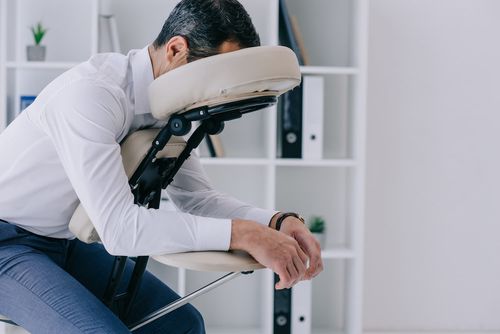What Is Deep Tissue Massage?
Deep Tissue Massage is a type of massage therapy that focuses on manipulating the deeper layers of tissue in the body, which includes the fascia (connective tissue) and other supportive tissue that comprise the muscles and joints. This type of massage is designed to reach the deep section of the individual muscle fibers by applying slow strokes and firm pressure.
Compared to other types of massage therapy, deep tissue massage is less rhythmic and is usually slower and firmer. The techniques used are also different in terms of the strokes and muscles stretches. The primary objective of deep tissue massage is to break up muscle adhesions that cause pain and stiffness in the back, neck, shoulders and legs.

How Does Deep Tissue Massage Work?
Through the use of deep muscle compression, deep tissue massage helps unstick the muscle fibres and release both toxins and deeply held tension points. It employs several hand positions and strokes to respond to muscle groups close to the bones, where tension and pain build up. One of the common massage strokes used in this manual therapy is stripping stroke, which works across the length of the muscle fibres to eliminate the trigger points and introduce new blood into the muscles.
The massage therapist uses their elbow, forearm, knuckles, and thumbs for the stripping stroke, while encouraging the client to breath throughout the process to release muscle congestion. When the muscles are loosened, toxins from the muscles are released, and blood and oxygen can properly circulate.
What Are the Benefits of Deep Tissue Massage?
Deep tissue massage addresses muscle pain and immobility resulting from a sports-related injury, a health condition or poor posture. It sounds like something only athletes will benefit from, but in reality, it goes beyond enhancing athletic performance as it can help address a wide range of health conditions such as the following:
- Chronic muscle pain
- Rehabilitation from injury
- Back pain
- Limited mobility
- Recovery and rehabilitation from injuries
- Repetitive strain injury
- Postural problems
- Muscle tension
- Osteoarthritis pain
- Sciatica
- Piriformis syndrome
- Tennis elbow
- Fibromyalgia
- Upper back or neck pain
- High blood pressure
- Stress and anxiety
- Arthritis
- Scar tissue
What Can You Expect From Deep Tissue Massage?
During a deep tissue massage session, the client lies on their back or stomach on the massage table while the trained therapist applies deep pressure on the target areas of their body. Wearing loose clothing in lightweight material is recommended during a massage session to make it easier for the therapist to detect the problem areas.
The client may experience some pain or discomfort while the massage therapist works on the areas where there are adhesions or scar tissue. However, pain doesn't indicate that the massage is effective. As a matter of fact, the body responds to pain by tensing up, which makes it hard for the therapist to reach the deeper muscles.
It is important to tell your therapist when you start feeling pain so he or she can adjust the technique or further prepare the tissues if the superficial muscles are still tense. It should also be noted that this type of massage is not recommended for people with blood clots due to risks of becoming dislodged. Consult your doctor first if you have blood clots or are at risk of forming blood clots.
A deep tissue massage session can last for an hour or an hour and a half. After the session, the client must drink plenty of water to wash the toxins out of their body. They may feel a bit sore after the session but should feel better after a day or two. Clients with serious muscle injuries might need to see their therapist twice a week, but this doesn't go for everyone. Some massage therapists might advise their clients to get a massage fortnightly.




